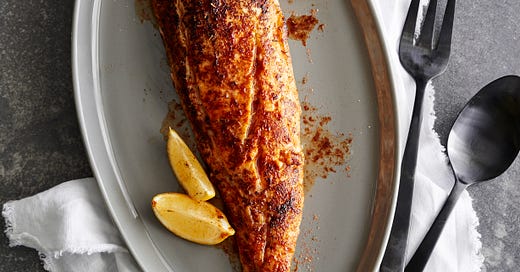Slow Down: The Secret Art of Cooking Fish - No. 214
Slow-roast grouper in the oven to retain moisture and saute snapper and other delicate fish in an iron skillet
LIVING IN THE LANDLOCKED SOUTH, I don’t have easy access to fresh fish. And I’ve sadly never lived on a coast where I can just wander down to the dock to see what has come in that day.
If it hadn’t been for my years spent in Atlanta when I could buy all sorts of fresh fish either…




